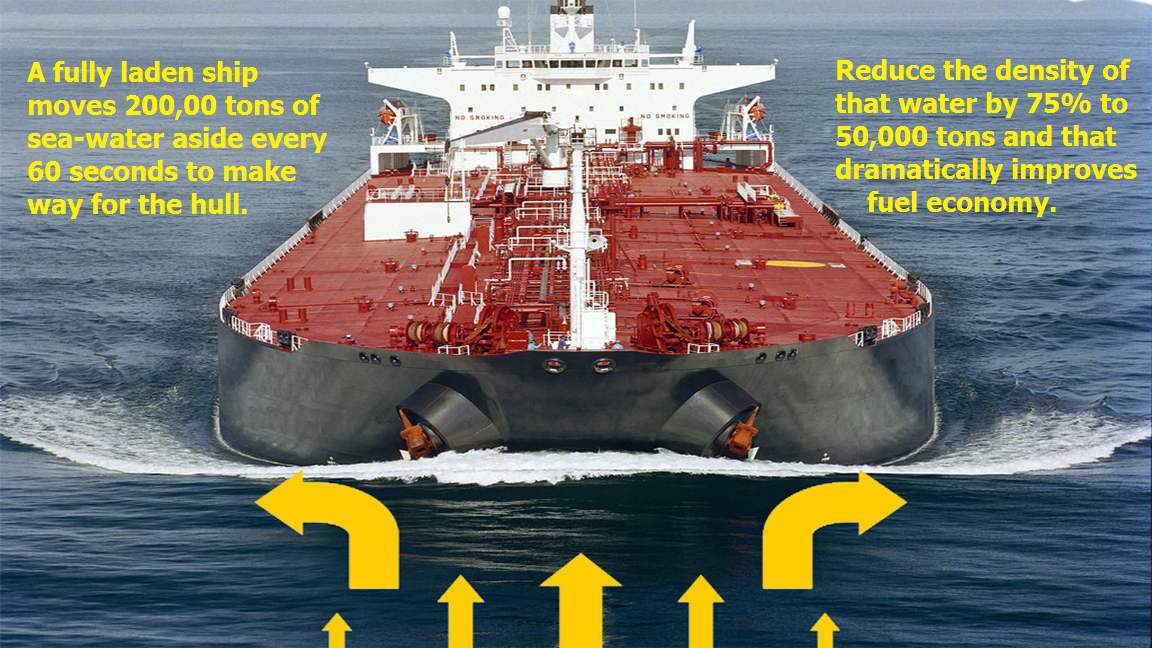Innovation Will Deliver 25 Percent Fuel Savings

Inventor Chris Kinman has designed and patented three bubble systems that work in different ways to dramatically reduce the density of water lying directly ahead of a ship. He claims they can reduce fuel consumption on large cargo ships by 25 to 35 percent, at the same time boosting speed by 20 to 30 percent.
The systems are unlike existing bubble lubrication systems, because Kinman's system focuses on the bow of the ship, from keel to load line, to reduce the mass of water that must be accelerated and pushed to the sides as the ship sails.
“A ship spends a lot of energy making a heavy bow wave and then trying to climb it,” says Kinman. “And then spends even more energy pushing its own weight of seawater aside every minute of a voyage to make way for the hull.”
On a very large, fully loaded ship traveling at 16 knots, the mass of water pushed aside every 60 seconds is something in the order of 200,000 tons, he says, calculated as “displacement loaded” multiplied by the “number of hull lengths” traversed in 60 seconds.
“It is not difficult to see that a lot of power produced by the propulsion engines is used to push great masses of seawater aside to make way for the ship. This happens over and over, every 60 seconds for the entire duration of a ships voyage. A lot of fuel is wasted pushing some eight billion tons of seawater aside during a 31 day voyage,” says Kinman.
While a bulbous bow neutralizes the “hill climb” effect, the ship must still push huge masses of seawater to each side.
In one of Kinman's system, the device is a semi-guided bubble system comprised of a stack of horizontal plates deployed on the bow, like a deck of playing cards, arranged with spaces between them. These spaces form a stack of open front ducts which guide compressed air bubbles horizontally and push water along in the same direction. The forward movement of the ship puts pressure on the bubble front, confining it within the ducts. The bubbles in the ducts push seawater around the bow to the sides, instead of the ship doing it.
The air is blasted along the ducts towards the stern where it accelerates the flow of seawater in a laminar flow which is exhausted at the trailing end. Like a jet engine, this underwater exhaust contributes to propulsion effort, and the energy spent in compressing the air is recovered. The spent bubbles cloak as much as 60 percent of the side of the hull and provide collateral bubble lubrication, which is a secondary benefit.
“This is not about bubble lubrication,” says Kinman. “The primary objective is to reduce the density of seawater that lies ahead of the ship by foaming the sea with an dense field of bubbles. This rapidly creates a low density hole ahead of the ship which it glides into with reduced propulsion effort.

